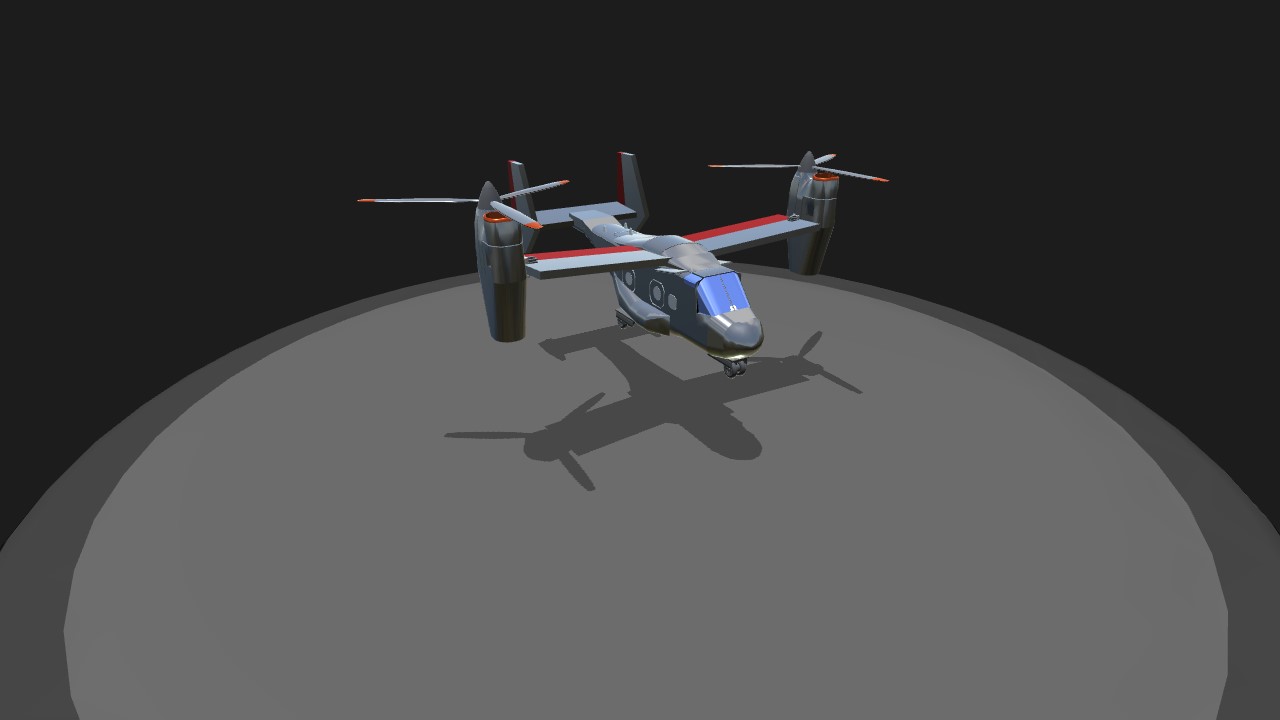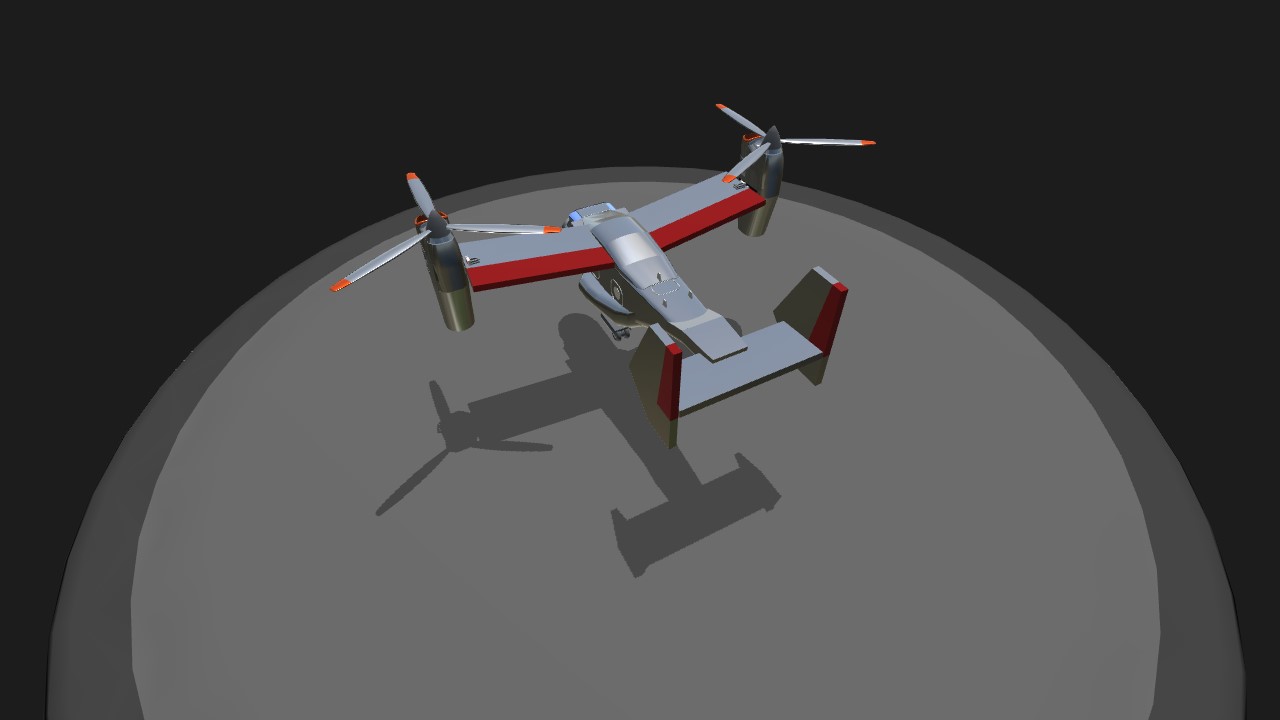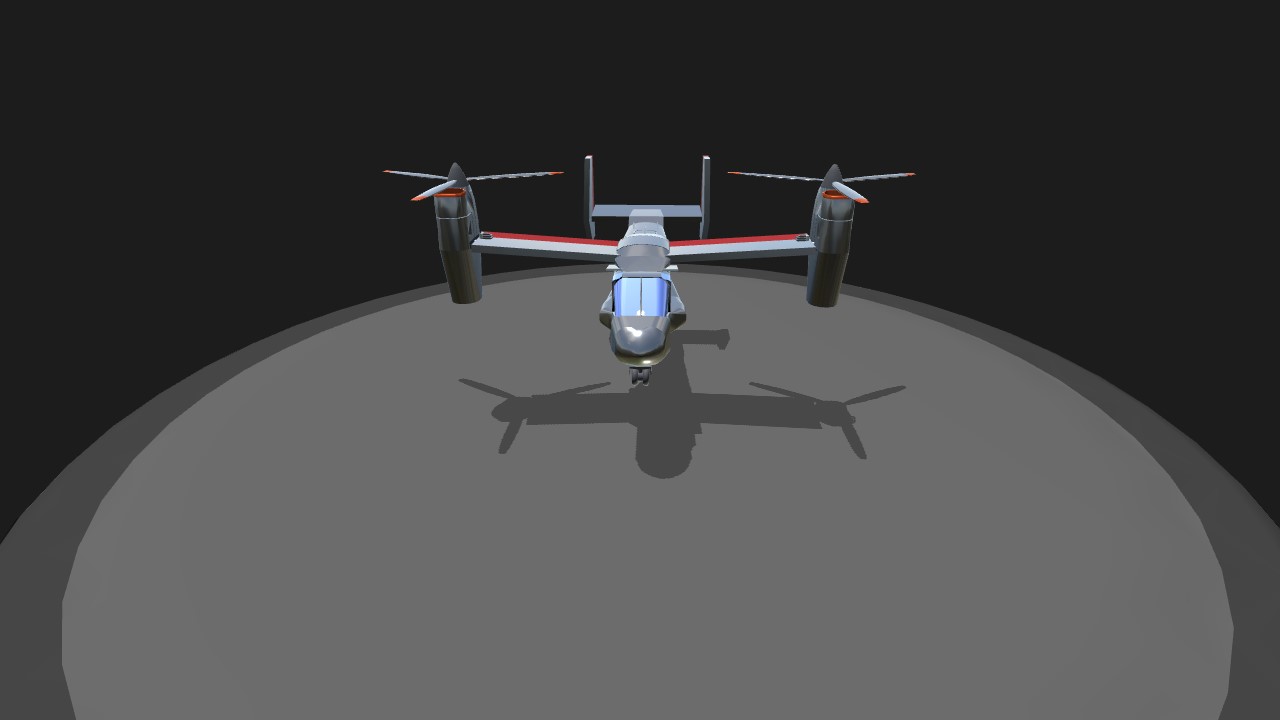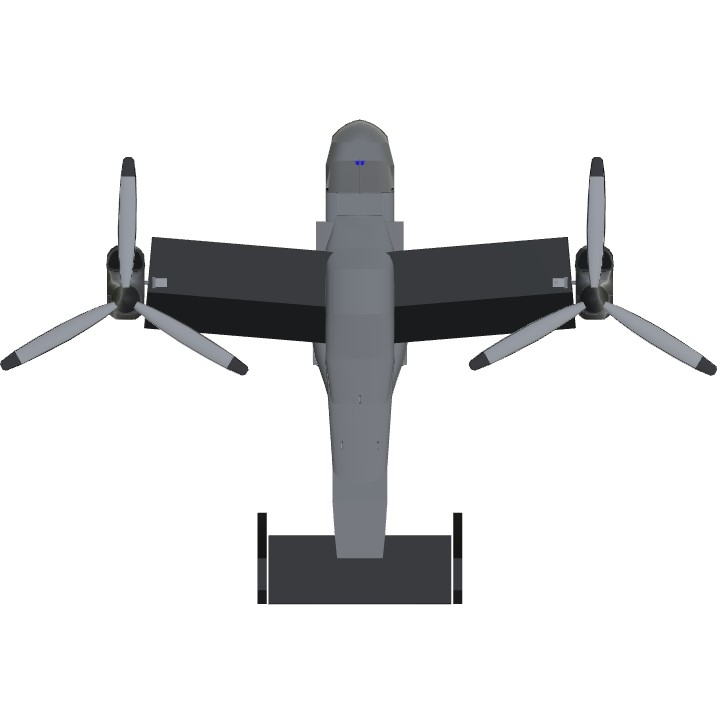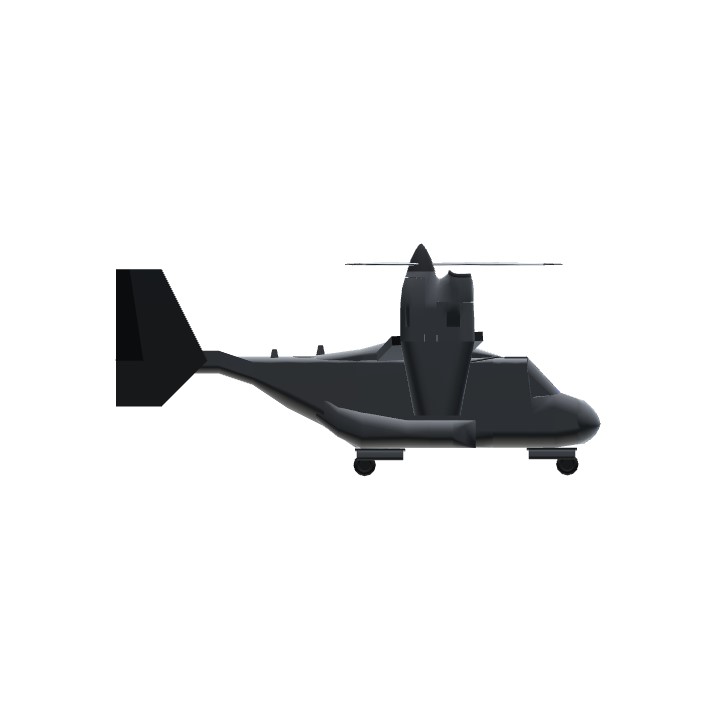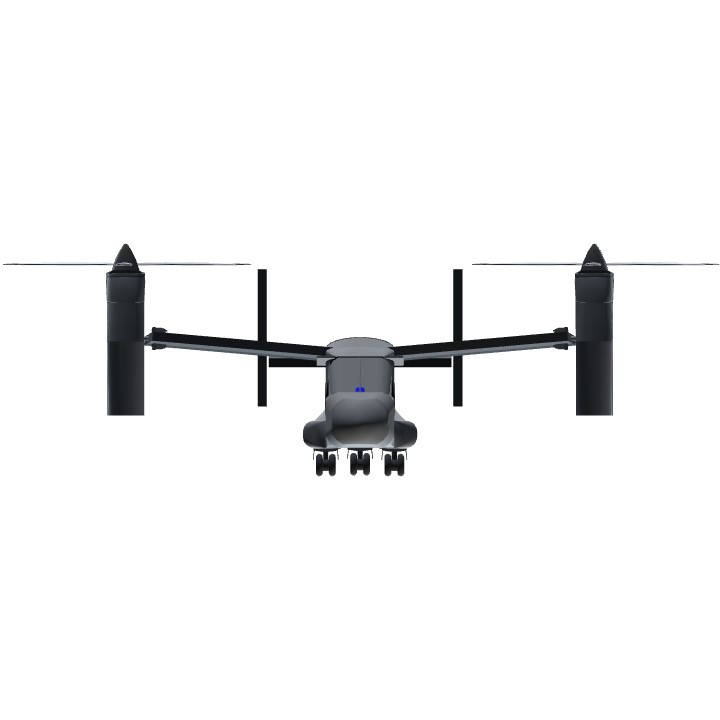Another Mini series plane. Mini V-22 Osprey. . This is one challenging plane to fly because of the changes in the center of thrust when the rotors change from vertical lift to forward flight. The trick to fly it successfully in the initial lift off phase is to gain height as well as forward speed.
How to do a Short-Take-Off.
1, Power up to 100%.
2. No need to apply flap during take-off (update 25.02.2020),
3. As the rotor speed pick up, move the rotator about 1 step above the middle arrow. This is to initiate some forward speed to the plane.
4, As soon as the plane started to lift off, the nose will tend to dipped, so move the rotator back to the middle arrow. Try to balance the plane's lift off height with some forward speed by moving the rotator between 1 step above the middle arrow and back to the middle arrow. The plane will also tend to move to the left. Use the roll to correct it.
Once your plane is stable and forward speed is above 150km/hr, you can gradually (slowly) tilt the rotor forward by moving the rotator upwards. At this point the plane is relatively stable and since the forward speed is still very low, move the rotator upward slowly while holding down on the flap. When the forward speed reaches above 250km/hr you can gradually move the rotator pass the 2nd top arrow and gradually to the top arrow. once the plane reaches 400+km/hr, you can move the rotor more freely without having to worry it stalling. Let me know how is your experience in flying this plane. Thank you and have a pleasant flight. . . Oh, another thing, don't forget to retract your landing gear. . .
BTW, do check out my F-14 sweppable wing and AV-8 tilting nozzle. .
ps. Forgot to mention that you can dive or increases height by changing the rotor position.
Specifications
General Characteristics
- Created On Windows
- Wingspan 25.8ft (7.9m)
- Length 17.3ft (5.3m)
- Height 8.4ft (2.5m)
- Empty Weight 8,869lbs (4,023kg)
- Loaded Weight 10,844lbs (4,919kg)
Performance
- Horse Power/Weight Ratio 8.298
- Wing Loading 125.9lbs/ft2 (614.9kg/m2)
- Wing Area 86.1ft2 (8.0m2)
- Drag Points 3473
Parts
- Number of Parts 85
- Control Surfaces 6
- Performance Cost 383

